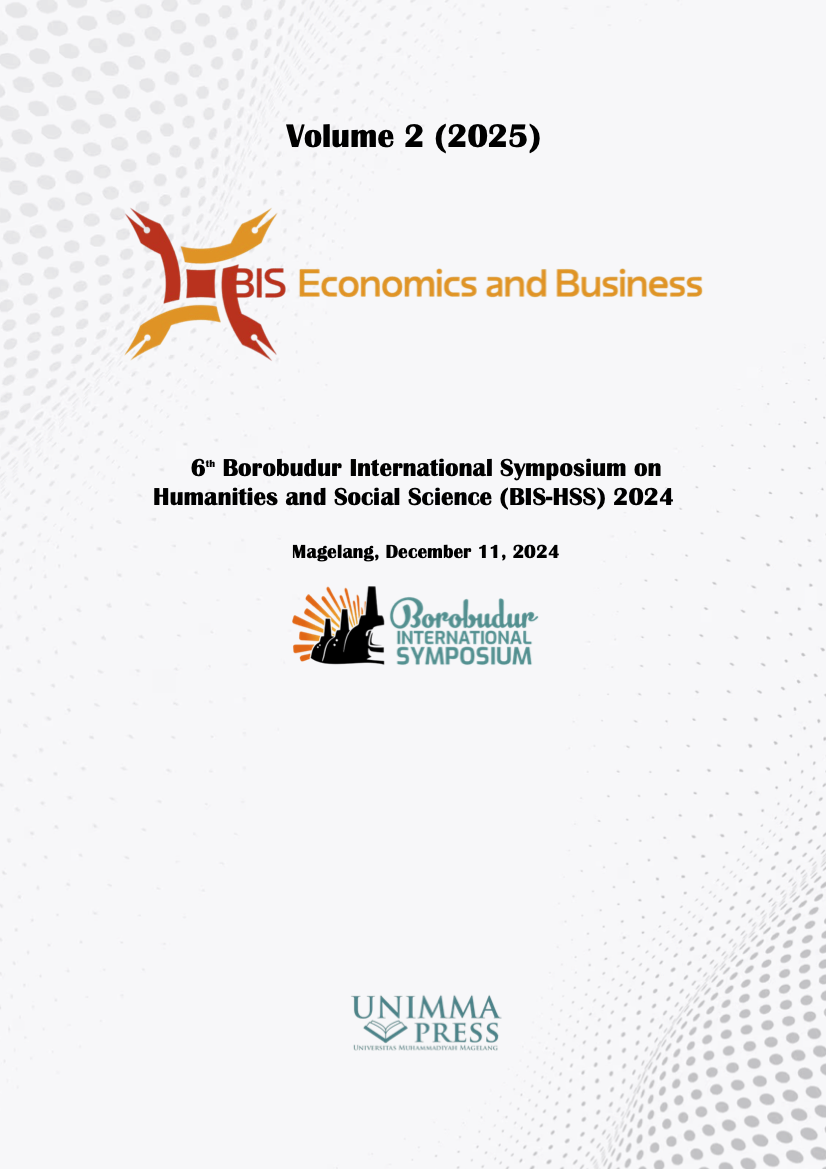Green credit subsidy and environmental tax as determinants of green technology adoption
Keywords:
Green technology adoption, Green credit subsidy, Environmental taxAbstract
Adoption of green technology has emerged as a key area of attention for governments and corporations globally as they work to solve environmental issues and accomplish sustainability objectives. The impact of environmental levies on encouraging the adoption of green technologies, however, seems to be more complex. We use a theoretical literature in this research. Based on the conceptual research, authors concludes that subsidy on green credits has positive effect on green technology adoption, and environmental tax has negative effect on green technology adoption. Suggestions for further research are to conduct empirical research on the concept of this research.
References
1. Garcia-Quevedo, J., Martinez-Ros, E., & Tchorzewska, K. B. (2022). End-of-pipe and cleaner production technologies. Do policy instruments and organizational capabilities matter? Evidence from Spanish firms. Journal of Cleaner Production, 340, 130307. https://doi.org/10.1016/j.jclepro.2021.130307
2. Lyness, K. S., & Brumit Kropf, M. (2007). Cultural values and potential nonresponse bias: A multilevel examination of cross-national differences in mail survey response rates. Organisational Research Methods, 10(2), 210–224.
3. Paramati, S. R., Shahzad, U., & Doğan, B. (2022). The role of environmental technology for energy demand and energy efficiency: Evidence from OECD countries. Renewable and sustainable energy reviews, 153, 111735.
4. Shen, B., Zhu, C., Li, Q., & Wang, X. (2020). Green technology adoption in textiles and apparel supply chains with environmental taxes. International Journal of Production Research, 59, 4157 - 4174.
5. Shinwari, R., Yangjie, W., Payab, A.H., Kubiczek, J., & Dördüncü, H., 2022. What drives investment in renewable energy resources? Evaluating the role of natural resources volatility and economic performance for China. Resour. Policy 77, 102712. https://doi.org/https://doi.org/10.1016/j.resourpol.2022.102712.
6. Tchorzewska, K.B., Garcia-Quevedo, J., & Martinez-Ros, J. (2022). The heterogeneous effects of environmental taxation on green technologies. Research Policy. 51(7), 104541.
7. Torkayesh, A.E., Tirkolaee, E.B., Bahrini, A., Pamucar, D., & Khakbaz, A. (2023). A Systematic Literature Review of MABAC Method and Applications: An Outlook for Sustainability and Circularity, Informatica 34: 415-448.
8. Vasiljeva, T., Shaikhulina, S., and Kreslins, K. (2017). Cloud Computing: Business Perspectives, Benefits and Challenges for Small and Medium Enterprises (Case of Latvia), Procedia Engineering, 178: 443-451.
9. Yi, Y., Wang, Y., Fu, C., & Li, Y. (2022). Taxes or subsidies to promote investment in green technologies for a supply chain considering consumer preferences for green products. Comput. Ind. Eng., 171, 108371.
10. Yu, X., Sun, Y., Xu, Y., & Zhang, J. (2022). The Synergy Green Innovation Effect of Green Innovation Subsidies and Carbon Taxes. Sustainability, 14(6), 3453. https://doi.org/10.3390/su14063453
11. Zaman, R., Asiaei, K., Nadeem, M., Malik, I., & Arif, M. (2023). Board demographic, structural diversity, and eco-innovation: International evidence. Corporate Governance: An International Review.
12. Zaman, R., Atawnah, N., Haseeb, M., Nadeem, M., & Irfan, S. (2021). Does corporate eco innovation affect stock price crash risk? The British Accounting Review, 53(5), 101031.
13. Zhang, X., Wang, P., & Xu, Q. (2024). Corporate environmental governance under the coordination of fiscal and financial policies: The case of green credit subsidy policy. Finance Research Letters, 64, 105409.
Downloads
Published
Conference Proceedings Volume
Section
License

This work is licensed under a Creative Commons Attribution-NonCommercial 4.0 International License.

